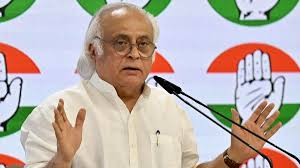Indian Rupee Opens Higher at 85.44/$ as Oil Prices and Dollar Ease
The Indian Rupee opened on a stronger note on Monday, rising by 8 paise to 85.44 against the US Dollar. This comes after the currency closed at 85.52 per dollar on Friday, marking a modest gain supported by falling crude oil prices and a slight dip in the dollar index.

Rupee Gets a Boost from Global Factors
This upward movement in the rupee comes as a result of favorable shifts in global market conditions. Brent crude prices dropped below $84 a barrel over the weekend, offering relief to oil-importing nations like India. Since India sources over 80% of its crude needs from abroad, lower oil prices directly benefit its trade balance and inflation levels, easing pressure on the rupee.
At the same time, the US Dollar index—measuring the greenback against major global currencies—eased slightly below the 105 mark. Investors are exercising caution ahead of critical US data releases, particularly the inflation report and the Federal Reserve’s meeting minutes, both expected this week. Any signs of slowing inflation in the US could influence Fed policy and potentially weaken the dollar further.
RBI’s Steady Hand in Currency Management
The Reserve Bank of India (RBI) continues to play a stabilizing role in the foreign exchange market. The central bank has been intervening whenever necessary to limit excessive volatility, preventing the rupee from falling sharply. With India’s forex reserves standing strong at $645.58 billion, the RBI is well-positioned to manage any future shocks.
These reserves not only act as a buffer but also enhance investor confidence during periods of global uncertainty. Currency traders often see RBI’s active role as a positive sign, as it helps avoid panic-driven movements in the rupee-dollar pair.
Domestic and International Influences
Despite Monday’s gains, the rupee still faces medium-term challenges. Foreign Institutional Investors (FIIs) have continued to pull money out of Indian equity and debt markets, reducing dollar inflows. Part of this withdrawal is tied to global risk aversion and caution ahead of India’s general election results, which could shift domestic policy dynamics.
Internationally, tensions in the Middle East and weak economic indicators from China remain key concerns. Any rise in geopolitical risk or disruptions to global supply chains could once again impact oil prices and increase pressure on emerging market currencies like the rupee.
On the domestic front, India’s macroeconomic fundamentals remain sound. GDP growth remains above 7%, core inflation appears to be under control, and the manufacturing and services sectors continue to post positive data. These indicators provide a strong foundation that may help limit the rupee’s downside in the long run.
What Lies Ahead for the Currency?
Currency analysts believe that the rupee is likely to trade within a tight band in the near future, possibly between 85.30 and 85.80 against the dollar. The next few sessions will be influenced by developments in the US, particularly any updates related to interest rate expectations from the Federal Reserve.
Should the US inflation data point toward cooling prices, markets may begin to expect rate cuts sooner, weakening the dollar further. On the other hand, stronger-than-expected inflation or hawkish Fed statements could renew dollar strength, posing fresh challenges for the rupee.
Implications for Trade and Business
The rupee’s performance directly impacts both importers and exporters. A stronger rupee makes imports—especially those priced in dollars—cheaper. This benefits sectors such as electronics, crude oil, and chemicals. However, for exporters, particularly in IT and textiles, a firmer rupee may reduce earnings when converted from dollars to rupees.
To counter these fluctuations, many companies are now relying on hedging tools to manage currency risk. These strategies allow businesses to lock in rates and reduce uncertainty in international transactions.
Final Thoughts
The Indian Rupee’s 8 paise rise on Monday signals temporary relief after weeks of downward pressure. Easing crude oil prices and a softer US dollar have helped the rupee regain some ground. However, with global financial conditions still evolving and political developments in focus, the outlook for the rupee remains cautiously optimistic.
Investors and policymakers will keep a close watch on upcoming data and external factors that could influence currency markets. While today’s appreciation is a step in the right direction, sustained stability will depend on how global economic trends unfold in the weeks ahead.






